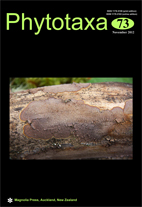Abstract
Recent phylogenetic analyses challenged the traditional generic concept of the Bartramiaceae (apple mosses), especially with regard to the largest genus Bartramia. Although molecular analyses revealed the three Bartramia sections (Bartramia, Strictidium and Vaginella) to be monophyletic, they appeared in different parts of the inferred phylogenies and thus rendered the genus itself polyphyletic. In addition, Anacolia laevisphaera, a tropical montane species, appeared in the section Strictidium, weakening its character as a typical Mediterranean element. Although morphologically similar to members of the section, such as B. stricta, A. laevisphaera has been generally treated within the genus Anacolia based on sporophytic characters. In fact, Anacolia laevisphaera is often confused with B. stricta in sterile condition. A thorough analysis revealed another surprise, in placing A. laevisphaera sister to the Southern South American samples of Bartramia stricta, while the Mediterranean populations of “B. stricta” cluster with the Australian B. breutelii. Subsequent morphometric studies revealed three morpho-species in accordance with the polyphyletically resolved B. stricta. Here we describe the new species Bartramia rosamrosiae to accommodate the Mediterranean and western North American populations of what was traditionally treated as B. stricta.

